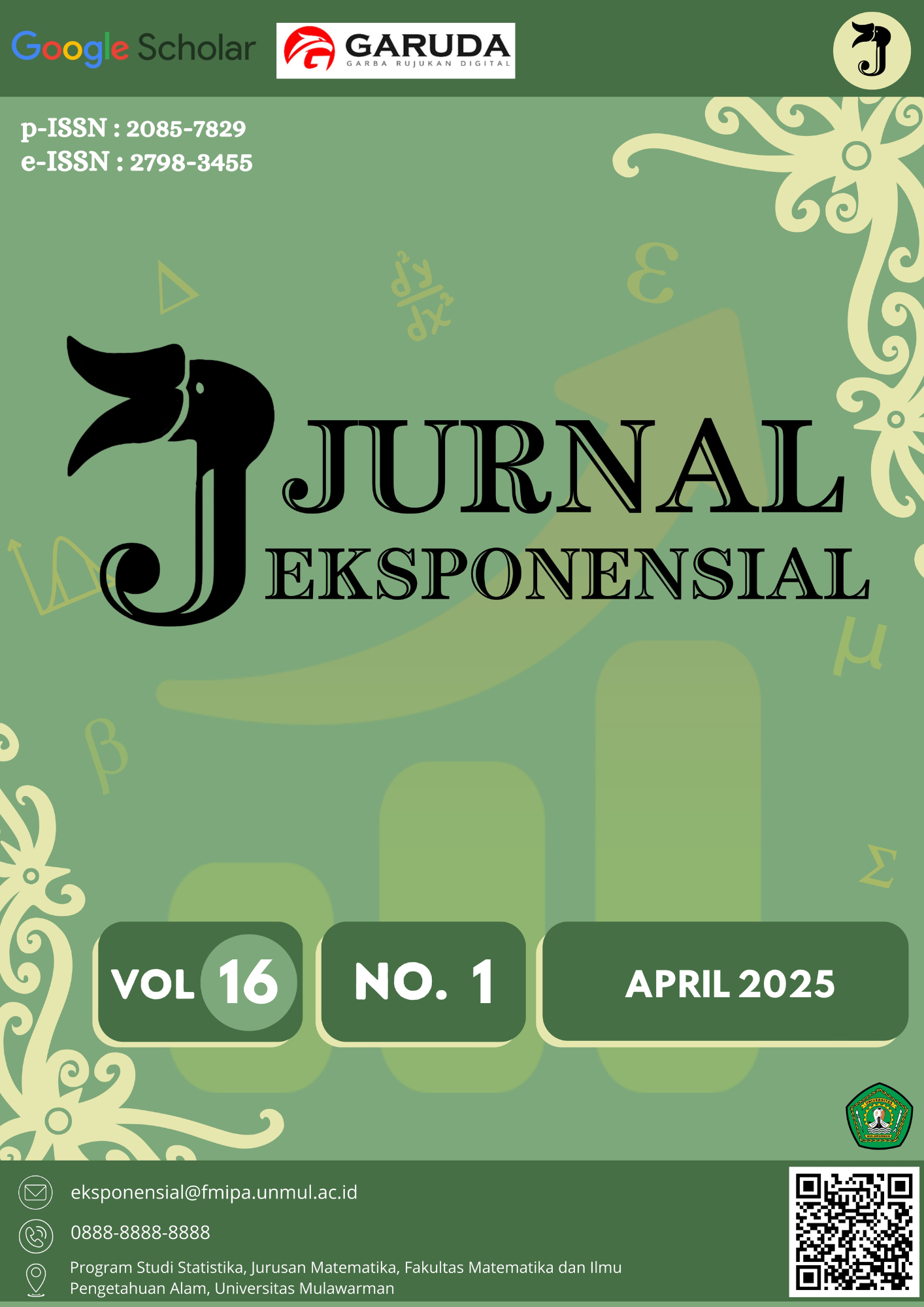Penerapan Spatial Error Model (SEM) Dalam Menganalisis Faktor-Faktor Yang Mempengaruhi Stunting Balita Di Indonesia
DOI:
https://doi.org/10.30872/eksponensial.v16i1.1465Kata Kunci:
Stunting, Spatial Error Model (SEM), Queen Matrix ContiguityAbstrak
Stunting, a major public health concern hindering child development, remains prevalent in Indonesia. This study employs a spatial approach to analyze the prevalence and spatial patterns of stunting across 34 provinces in Indonesia in 2022. We utilize Exploratory Spatial Data Analysis (ESDA) with Moran's I to assess spatial autocorrelation and identify potential model types (e.g., Spatial Autoregressive Model (SAR), Spatial Error Model (SEM), General Spatial Model (GSM). Following this, Local Indicators of Spatial Association (LISA) can be employed to pinpoint specific spatial clusters of high or low stunting prevalence. The analysis confirms spatial autocorrelation, and subsequent modeling using a suite of spatial regression techniques (including SAR, SEM, and SARMA/GSM) reveals the SEM as the most suitable model for this study with the weighting of the queen matrix contiguity. The SEM analysis identifies two key factors influencing stunting rates: the percentage of the poor population and the percentage of infants under 6 months receiving exclusive breastfeeding. This study highlights the importance of a spatially informed approach for developing effective national and regional stunting prevention programs. By targeting interventions in provinces with high stunting clusters and addressing underlying factors like poverty and breastfeeding practices, policymakers can create more equitable resource allocation strategies to combat stunting and improve child health outcomes nationwide.


